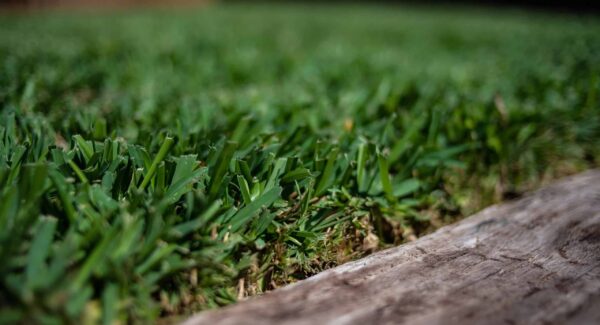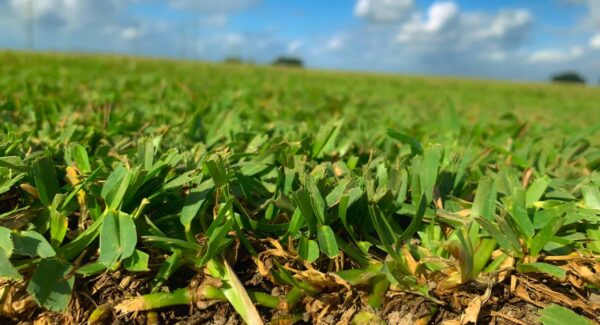New Sod Care Timeline – When & How To Water, Mow And Fertilize
You’ve got an idea to create a beautiful, well-maintained lawn in your yard. You’ve planned the area, envisioned its shape, and are one step away from buying grass sod (this process is made easy with The Grass Outlet so that you can trust our offerings and expertise). At the same time, you might be wondering about the care process after planting. How will the lawn be further maintained throughout the year?
In addition to finding advice on our website about which type of grass to choose, we also provide you with a guide on caring for a newly planted lawn to clarify this entire process. A neat, healthy, green lawn is one of the most beautiful sights around family homes, cottages, accommodations, or parks, so nothing should be left to chance.
Once you establish a clear and straightforward care process, you can quickly and effortlessly maintain a healthy lawn, enhancing the space, bringing the entire family satisfaction, and, most importantly, serving as a venue for unforgettable family events and gatherings with friends.
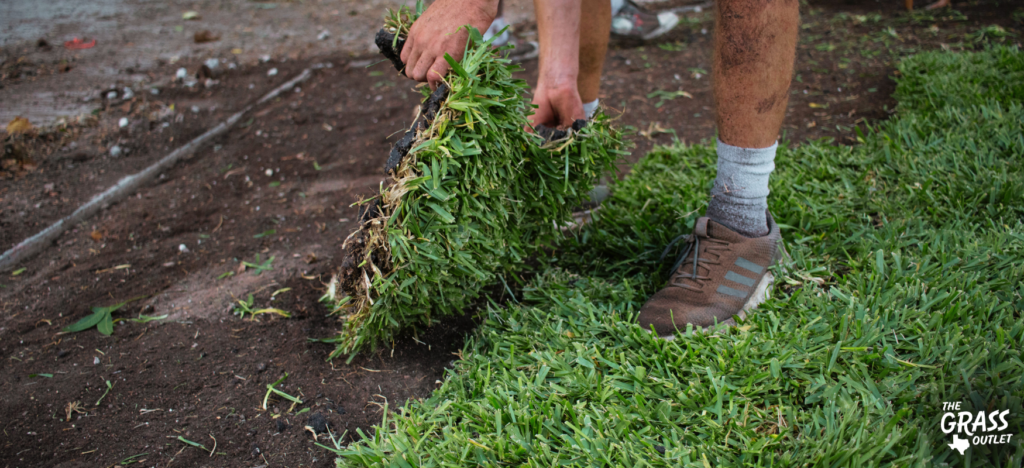
How To Prepare The Soil For Sod Installation
A handy tip is to plan the components you want to put into the soil before planting the lawn, such as irrigation systems or lighting cables. To avoid settling, you need to fill the excavated channels in layers.
It’s essential to complete any construction work you have in mind, such as building a fence or walkways, before sod installation. Any damage will be noticeable afterward; we’re sure you want to avoid that.
After that, the dirty work begins with soil preparation – plowing, digging, and leveling. Ammending your soil with compost during soil digging is advisable. The thickness of the lawn compost layer should be 2-3 inches, and once spread, should be tilled into the top 2-3 inches of existing soil.
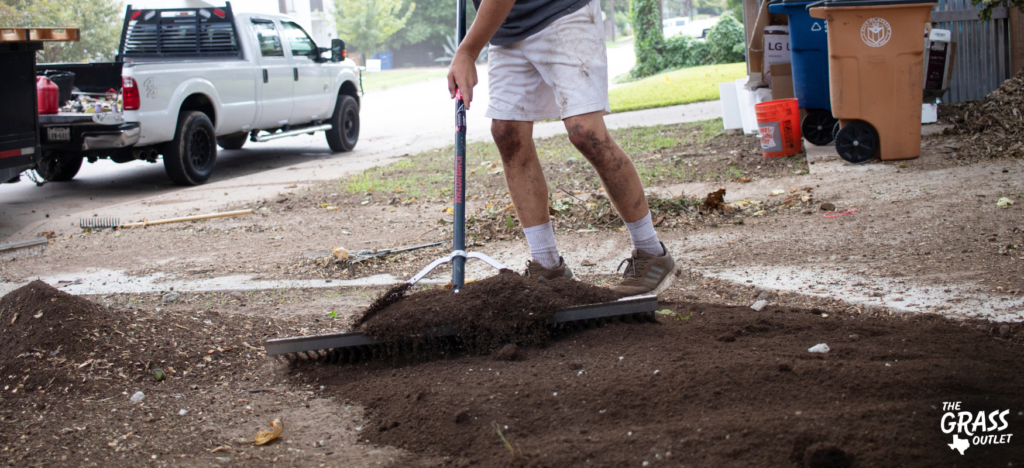
After you finish the process of amending and cultivating your soil, level the terrain with rakes as precisely as possible to allow the soil to settle evenly. The surface must have a slight slope (about 1% grade) away from your home to prevent water pooling after heavy rainfall.
Soil with good water drainage is crucial for a lawn, and you achieve excellent permeability by addressing compaction issues by working the organic material into the earth, as mentioned above, and adding 2-3 inches of landscape mix to lay your new grass on. Spread a layer of your landscape mix (50% chocolate or sandy loam & 50% organic compost) several inches thick. Ensuring you have at least 6 inches of cultivated, nutrient soil adds an excellent foundation that allows proper movement of water, oxygen, and nutrients around the roots.
Before laying the grass sod, it’s necessary to water the soil because otherwise, dry ground can draw moisture and nutrients from the grass. Misting the ground with water will also lower soil temperatures so the grass stresses less post-installation. However, take care to do it sparingly because adding too much water can create a muddy workspace.
Once you’ve chosen the type of grass and installed the sod, the care process begins, as the goal is to have a healthy and well-maintained lawn.
What To Do Immediately After Sod Installation? Watering – How Much And When?
Right after laying down the grass sod, you should water the entire area so that the water penetrates the soil to a depth of 6 inches. Don’t be surprised that your new sod will require a lot of water in the first few weeks, as this is a natural and essential process for establishing a strong, healthy lawn. Proper watering is crucial for the roots to develop correctly and deeply.
Newly sodded areas should be evenly watered daily, in the morning, between 2-10 am. Each zone typically needs 1-1.5 inches of water daily; however, your yard may need more if your soil is dense clay or compacted. Applying adequate water all at once will allow the water to penetrate the soil deeply, which is required for healthy root establishment. You can use this guide to determine your irrigation runtime per zone based on your irrigation system and the 6 S’s (soil, sunlight, season, sprinkler head type, slope, and species).
It’s best to use an in-ground irrigation system for even coverage and to ensure each square foot receives at least an inch of water. If you must use a water hose, use a hose-end sprinkler attachment, as it is generally impossible to apply an inch of water to the entire lawn using a water hose or hose-end sprayer alone.
It’s important to know that grass should never receive too much water, as it can harm its roots. Diseases can develop because oxygen cannot reach the roots due to excessive moisture. A sign of too much water saturation in the soil is when small puddles start forming.
Once the grass is saturated, avoid walking on it. Additionally, you should avoid walking on the lawn until the first mowing.
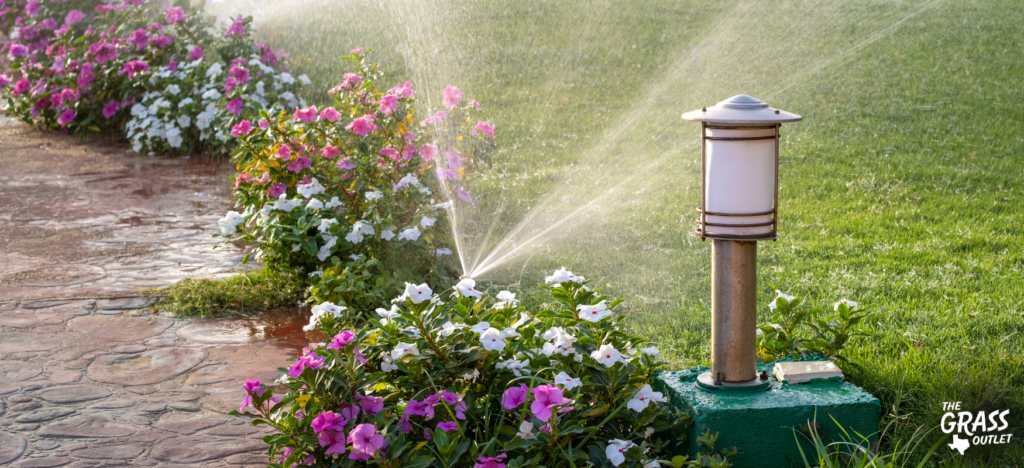
Reducing watering after two weeks
After the first 14 days, it’s important to gradually reduce the watering frequency to allow the grass to dry out and the soil to become firmer in preparation for the first mowing, which will take place a bit later. The watering schedule should consist of morning waterings every other day or every three days, but never let the grass completely dry out.
Compared to the first 14 days, the watering cycles should be less frequent in the latter part of the month, but continue to apply all the water simultaneously versus shorter, frequent applications. Deep, less regular watering allows the roots to penetrate deeper into the soil and develop properly. Areas of the lawn in the shade may take more time for the roots to penetrate the soil and typically require less water.
As the end of the first month since planting the lawn approaches, it will be able to withstand several days between watering cycles.
When should we perform the first mowing of a newly planted lawn?
As the first mowing of the lawn approaches, typically when the grass reaches a height of about 4 inches, it’s advisable to reduce watering to prepare the soil. We recommend using the sharpest blade on your lawn mower for the first and subsequent mowing processes.
Young grass is very delicate, so if the lawnmower blade lacks speed or sharpness, it can pull the grass out by the roots instead of cutting it. To prevent this, set the mower’s blade height to the highest position, ensuring that the initial mowing leaves the grass relatively tall. You can do it by changing the blade height for some mowers or altering the wheel positions for others. You should only remove about one-third of the leaf mass.
The optimal mowing height ranges from 1 inch to 3 inches. Mowing below this threshold can lead to desiccation of the sod and a reduction in the vitality of the grass. Allowing the grass to grow too tall can encourage pests and diseases and reduce lawn density.
Regular mowing helps the grass develop a stronger and more resilient stem and deeper roots and encourages rapid lateral growth, resulting in a dense lawn.
Lawn Care During the Period of Intensive Growth – First Six Months After Planting
Watering
After the first month, watering should remain regular but less intensive than it was in the initial month. Now, you should water when your grass shows the first signs of drought stress, such as wilted, dull leaves and longer-lasting foot impressions, to promote improved drought tolerance through healthy root growth and maintain a watering rhythm that benefits the grass. Typically, depending on the 6 S’s, this will be about once a week. A sign that your lawn still needs more water is if the grass turns brown and crispy or if there are bare spots in certain areas. In such cases, you can increase the frequency of watering cycles or make them longer to ensure the soil is better saturated.
Mowing
During the most intensive growth period, more frequent mowing is necessary to maintain the recommended mow height while following the ⅓ mow rule. Mow height and frequencty will vary significantly based on your grass variety. In the hottest weather, it’s recommended to mow slightly higher.
Generally, you can mow home lawns every 7-14 days, but mowing should be less frequent during the summer months and extreme heat to minimize stress.
As the vegetation begins to weaken, reduce the number of mowing sessions, and towards the end of the growing season, raise the mowing height, leaving slightly longer grass blades to minimize damage to the root system from freezing temperatures.
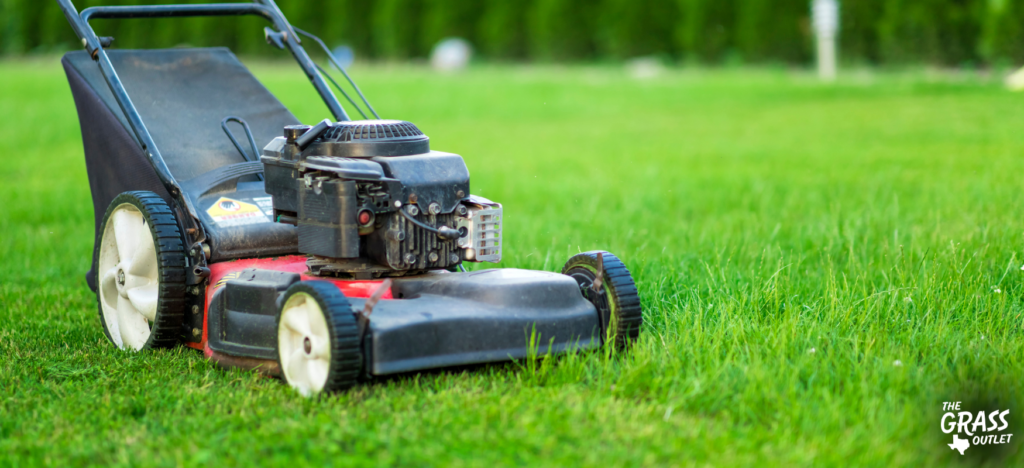
Fertilizing
You are fertilizing the lawn for the first time usually one month after planting. Before that, it’s not recommended because the sod needs time to establish its roots and strengthen. You can use either synthetic or organic fertilizers once your grass has developed a robust root system.
Organic fertilizers are derived from plants or animal sources. They contain organic materials (biological waste, compost, etc.) and naturally occurring minerals.
Synthetic fertilizers are produced by synthesizing minerals and substances; modern lawn maintenance often involves their use.
The primary nutrients for grass are nitrogen, phosphorus, and potassium. Secondary nutrients include calcium, sulfur, and magnesium, while micronutrients required in trace amounts include boron, chlorine, manganese, iron, zinc, copper, molybdenum, and selenium.
Regarding synthetic fertilizers, you should use balanced fertilizers (containing a specific ratio of these three primary elements, along with additional macro and micronutrients). These fertilizers often come in granular form and easily dissolve in water. Avoid applying synthetic high-nitrogen fertilizers during extreme temperatures, as doing so will burn your grass and make it less drought-tolerant.
Lawn Care Throughout the Year – Tips and Recommendations
Taking care of a lawn is manageable if you follow recommendations and advice. It can quickly become a source of satisfaction and efficiently carried out. After all, who wouldn’t want to have the most beautiful green lawn if they have the space and means for it?
Watering the lawn ensures that the root system receives adequate moisture, which should penetrate to a depth of 6 inches). Even during the summer, watering the lawn daily is unnecessary if you do it correctly.
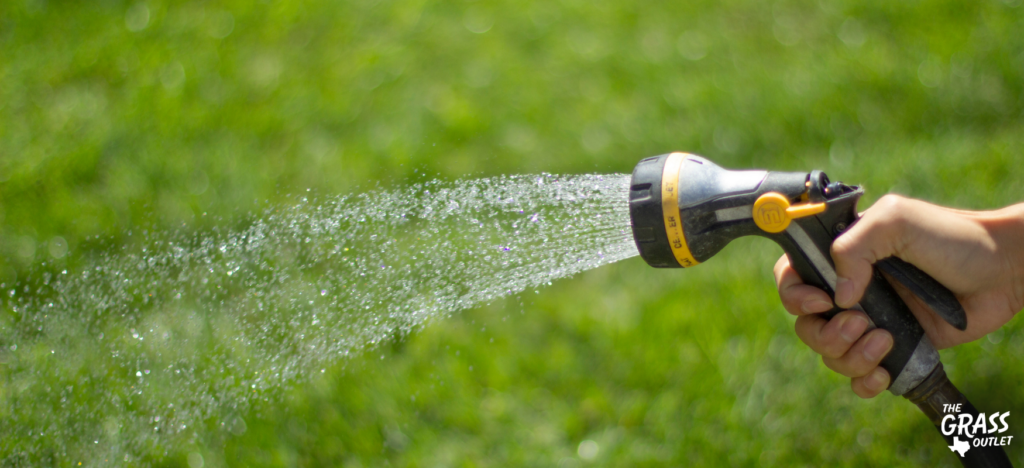
If winter and spring are dry, lawns should be watered earlier, not waiting for warm days.
Established lawns require less frequent watering compared to newly planted ones. Typically, it’s around 1-1.5 inches of water per zone.
During dry summer days, it’s advisable to water the lawn once or twice a week, either in the evening or early morning. Some experts suggest that the best time for watering is early morning, between 2:00 and 10:00 AM, but if you miss an early morning watering, it is best to apply it that evening versus skipping your schedule this time of year.
Regular mowing should be done weekly or once every two weeks, depending on the growth intensity and the time of year. Even during droughts, mowing should continue, as it reduces water loss. However, avoid mowing when afternoon temperatures exceed 90 degrees Fahrenheit and mow in the morning or evening when temperatures are cooler.
The first mowing is typically done in early spring before vigorous growth begins. It’s advisable to mow early in the morning or the evening, followed by watering. It’s recommended to cut at most one-third of the grass height. Mow in different directions to ensure an even cut.
The ideal time for fertilization is early spring after the grass begins to green.
Fertilizers used in spring and summer should have a higher nitrogen content to promote growth and achieve a vibrant grass color. It’s advisable to repeat fertilization in May and June. In the summer, be cautious with fertilization, considering soil moisture. You should apply fertilizers at precisely the rate indicated on the product’s label.
For fall feeding, fertilizers should contain less nitrogen and more potassium and phosphorus to support the intensive growth of the root system. This also provides resistance to drying out, freezing, and diseases. If your lawn shows patchiness despite adequate watering, it may indicate insufficient feeding or disease.
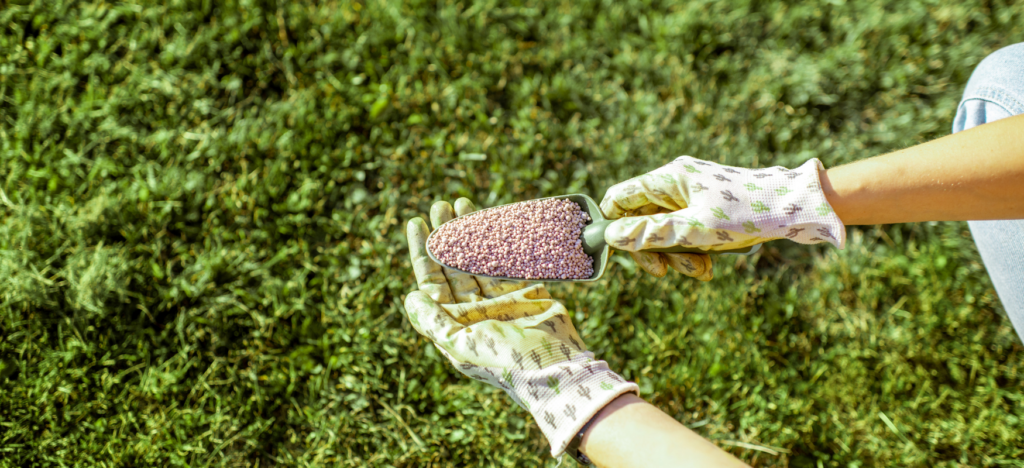
Additional tip
Consider using grass clippings as mulch for fertilizing your lawn. Some lawnmowers mulch the grass, further shredding it with a special blade. The shredded grass is evenly distributed and serves as a high-quality source of organic nutrients. Nutrients from the grass are released slowly and consistently, saving you on fertilizer costs. When grass is distributed like this on the lawn, moisture is retained in the soil for longer, preventing erosion.
Signs that your lawn is healthy and your care efforts are successful include:
- Lush green grass (no yellow or dark patches).
- The absence of weeds and pests.
- Effective drainage.
- The presence of a robust root system.
